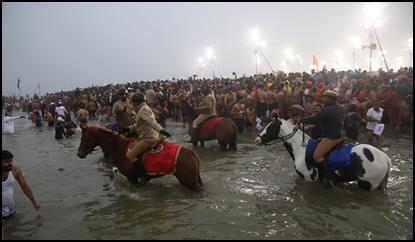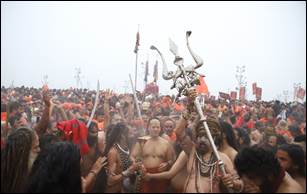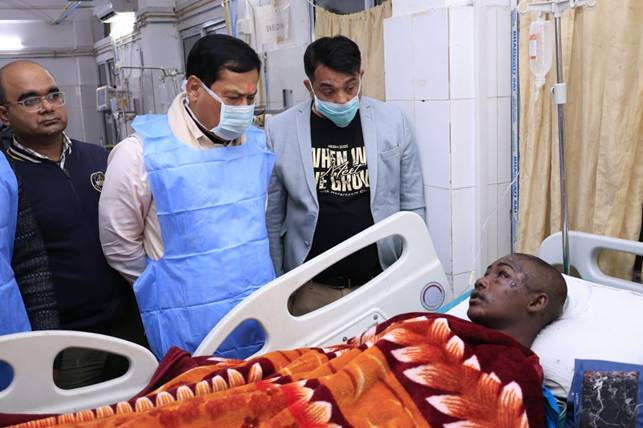
Prayagraj: As dawn broke on Makar Sankranti, a festival that signifies the conclusion of winter and the onset of warmer days, the banks of the Triveni Sangam—the meeting point of the Ganga, Yamuna, and Saraswati rivers—were transformed into a scene of divine beauty. From the Brahma Muhurta, when the first light of day illuminated the waters, to the depths of the night, an unceasing flow of devotees arrived, each aiming for purification and blessings through a sacred dip. The chill of January felt trivial in comparison to the warmth of shared devotion.
Under strict security measures, more than 35 million pilgrims had taken a dip in the sacred Sangam by 5:30 PM during the initial Amrit Snan on Makar Sankranti today, stated Yogi Adityanath, the Chief Minister of Uttar Pradesh. This brings the overall count of devotees to over 50 million in the first two days of the Maha Kumbh 2025.
The Maha Kumbh signifies the essence of Indian culture and spirituality. The Amrit Snan during Makar Sankranti is considered a means of inviting blessings and positivity into one’s life. Devotees believe that taking a dip in the sacred waters of the Sangam allows them to cleanse their sins and pursue salvation.
Also read: Maha Kumbh 2025: The grand spiritual spectacle begins
Many people performed Arghya for the Sun, asking for blessings related to virtue and salvation, as Makar Sankranti honours the Sun God. From a scientific perspective, this festival marks the Sun’s movement into the northern hemisphere, indicating increased daylight and shorter nights. Following the holy dip, devotees engaged in rituals and offered prayers at the ghats, presenting items such as sesame seeds, khichdi, and other sacred offerings.
Participants also took part in the Ganga Aarti. In keeping with tradition, they contributed to charity by giving sesame seeds and khichdi, enhancing the festival’s significance.
Amidst a crowd of millions, the display of the Akharas stood out remarkably. The Naga Sadhus from the Panchayati Akhada Mahanirvani conducted the Amrit Snan with regal splendour. Equipped with spears, tridents, and swords, they traversed through the masses in a truly majestic procession. Riding on horses and chariots, their ascetic figures radiated a spiritual aura that mesmerized the spectators. As groups of bhajan singers performed hymns and devotees shouted “Har Har Mahadev” and “Jai Shri Ram,” the atmosphere resonated with a sacred rhythm.
The event drew not only Indian followers but also attendees from various countries, including the United States, France, Israel, Iran, and Portugal, who were profoundly inspired by Indian culture and spirituality.
“The involvement of international participants and the magnificence of the event have played a crucial role in elevating India’s cultural heritage on a global scale, strengthening the country’s cultural identity around the world,” commented the Union Ministry of Culture.
The Maha Kumbh also included a variety of cultural events, where artists and devotees from various states showcased traditional music and dances, highlighting India’s cultural richness. The authorities offered facilities like free medical care, drinking water, and transportation to ensure a pleasant experience for all participants.
An interesting highlight of this year’s Kumbh was the incorporation of Assam’s traditional festival, Bhogali Bihu, within the mela grounds. Assamese saints and followers performed traditional dances and hymns, and shared rice-based treats, exhibiting the diverse cultural heritage of Northeast India.
In order to guarantee the safety and welfare of the participants, the administration assigned more than 50,000 security personnel, comprising police, paramilitary units, and local security personnel. Furthermore, ‘Ganga Seva Doots’ (volunteers for Ganga service) were positioned at the ghats to uphold cleanliness by swiftly collecting offerings and other items from the river.
– global bihari bureau








